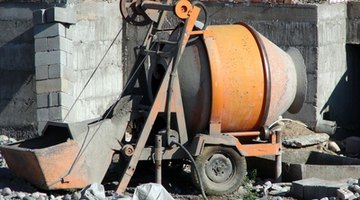How Deep Should I Put Concrete Piers In the Ground?
You can find concrete piers on a number of structures, from docks to commercial and residential buildings. They are also used to support or repair foundations already in place. Aside from the amount of piers used and the width of each, it is also important to consider the depth of the piers.

Soil Report
The depth that piers should be installed at depends on the soil type. The basic soil types include bedrock (which is strong and sturdy), gravel, coarse and fine sand, silt and organic soil. Organic soil cannot be relied on to support concrete piers or building structures. Because of this, it's wise to hire an engineer to analyze your soil before beginning construction.
Frostline
In colder areas of the country, water may freeze in the soil at a certain level and destabilize the concrete piers if they are not placed below this level. This frost line is usually determined by historical weather records and seasonal patterns, and is location-specific. State inspection departments will have specific information available on each city.
Building
The recommended depth of concrete piers is affected by the height and weight of the building. A smaller building will require a lesser depth for its concrete piers, while a structure with more height will need more stability, and thus more depth.
References
Photo Credits
- Concrete mixer image by zalisa from Fotolia.com
- Concrete mixer image by zalisa from Fotolia.com
More Articles



